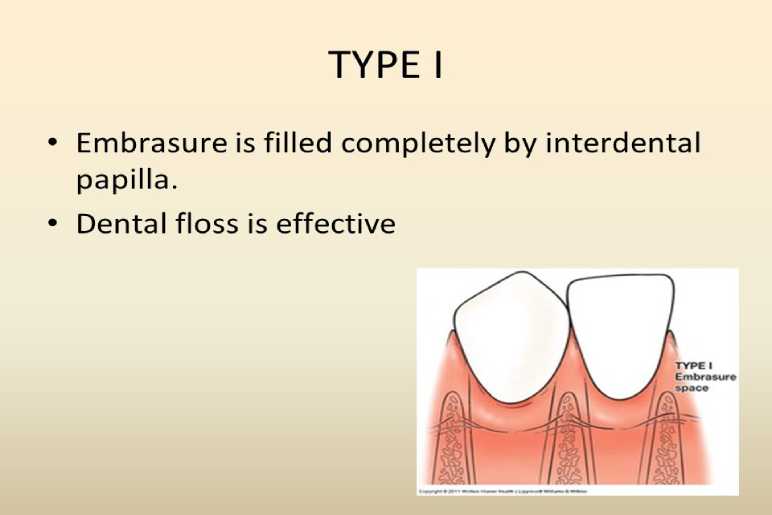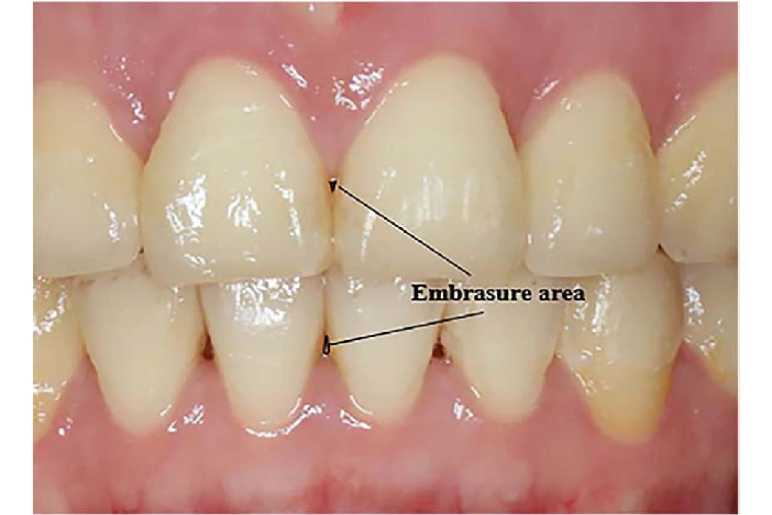When it comes to oral health and dental anatomy, understanding the concept of embrasures is essential. Embrasures are the V-shaped spaces that occur naturally between the teeth and the gums. These spaces are formed by the meeting of the curved surfaces of adjacent teeth. Embrasures not only play an important role in dental aesthetics but also help maintain oral health by guiding the food during chewing and ensuring that the gums remain protected.
In this blog, we’ll dive deep into the types of embrasures, their significance, and how they contribute to the overall health of your mouth.
What Are Embrasures?

Before we explore the different types of embrasures, it’s crucial to understand what they are. Embrasures are the triangular spaces found at the contact points between two teeth. They can be categorized based on their position and function, and they serve to guide food away from the gum line, helping prevent injury to the gums during chewing.
Embrasures are a vital part of dental anatomy because they:
- Prevent the accumulation of food between the teeth.
- Facilitate self-cleaning of the teeth.
- Allow for easy passage of dental cleaning instruments like floss.
Types of Embrasures

There are four primary types of embrasures, categorized based on their location in the mouth and the surrounding structures. These types include incisal, occlusal, cervical, and gingival embrasures. Each type plays a distinct role in maintaining oral hygiene and aesthetics.
1. Incisal Embrasures
Incisal embrasures are located between the anterior teeth, specifically the incisors. These embrasures form the triangular space at the cutting edge of the front teeth. Since the incisors are responsible for cutting food, the incisal embrasures allow for the effective passage of food away from the gum line.
Function of Incisal Embrasures:
- They aid in cutting food by allowing an efficient bite.
- Incisal embrasures are essential in creating an aesthetically pleasing smile.
- They contribute to proper spacing between the front teeth, preventing overcrowding.
In cosmetic dentistry, incisal embrasures play a key role in determining the size, shape, and positioning of the front teeth to create a harmonious smile. The proportions of these embrasures can affect the balance of the teeth and the appearance of the overall smile.
2. Occlusal Embrasures
Occlusal embrasures are found between the molars and premolars, particularly on the chewing surfaces of the back teeth. These embrasures are larger and more pronounced than the incisal embrasures due to the wider surface area of the molars.
Function of Occlusal Embrasures:
- They provide the necessary space for chewing food.
- Occlusal embrasures facilitate the flow of saliva, which helps in breaking down food and preventing food particles from getting trapped between the teeth.
- They also help in distributing the chewing pressure evenly across the teeth, reducing the risk of wear and tear.
These embrasures are important in ensuring that the occlusal surfaces remain free from food debris, which can lead to cavities if not properly cleaned.
3. Cervical Embrasures
Cervical embrasures, also known as interproximal embrasures, are the spaces found below the contact point of the teeth, near the gum line. These embrasures are essential for maintaining gum health as they prevent food particles from accumulating near the gum margin.
Function of Cervical Embrasures:
- They guide food away from the gums, reducing the risk of gum irritation and inflammation.
- Cervical embrasures allow for easy access to dental cleaning tools, such as floss and interdental brushes, making it easier to remove plaque and food debris.
- These embrasures play a critical role in preventing periodontal disease by ensuring that the gum tissue remains healthy and free of debris.
Cervical embrasures are particularly important for individuals who wear braces, as they make it easier to clean around the brackets and wires, reducing the risk of gum disease and tooth decay.
4. Gingival Embrasures
Gingival embrasures are the spaces between the teeth and the gums, also known as the gum embrasures. They are classified into three types based on the amount of gum tissue present:
- Class I Gingival Embrasures: In this case, the gum tissue completely fills the embrasure space. This is considered a healthy and ideal scenario, as it indicates that the gums are firmly in place and providing proper support to the teeth.
- Class II Gingival Embrasures: The gum tissue partially fills the embrasure space, leaving a slight gap. This could be due to gum recession or early-stage periodontal disease.
- Class III Gingival Embrasures: The embrasure space is completely open, with no gum tissue present. This is usually a sign of advanced gum disease or tooth loss and requires immediate dental intervention.
Function of Gingival Embrasures:
- They protect the underlying bone and roots of the teeth by preventing direct exposure to food particles and bacteria.
- Properly filled gingival embrasures help maintain the structural integrity of the dental arch.
- They play a role in preserving the aesthetic appearance of the gums and teeth, especially in the case of a “gummy smile.”
Maintaining healthy gingival embrasures is crucial for preventing gum disease, which can lead to tooth loss if left untreated.
Why Are Embrasures Important?
Embrasures are not just spaces between your teeth; they play a functional and aesthetic role in your oral health. Here’s why they are important:
- Prevention of Food Impaction: Embrasures guide food away from the contact points and the gum line, reducing the risk of food getting stuck between your teeth. This helps prevent cavities and gum infections.
- Support of Gum Health: Properly shaped embrasures ensure that your gums remain healthy by preventing irritation caused by trapped food particles.
- Self-Cleaning Mechanism: The natural flow of saliva and the movement of the tongue help clean the embrasure spaces, reducing the need for extensive manual cleaning.
- Aesthetic Role: Well-proportioned embrasures enhance the overall appearance of your smile by creating harmonious spacing between your teeth. This is particularly important in cosmetic dentistry, where small adjustments to embrasure size and shape can dramatically improve the aesthetics of a patient’s smile.
How to Maintain Healthy Embrasures
Maintaining the health of your embrasures involves regular dental hygiene practices such as brushing, flossing, and using interdental brushes. It’s also important to visit your dentist regularly for cleanings and checkups, as they can help identify any issues with your embrasures and provide solutions to maintain optimal oral health.
For professional dental care and to ensure your embrasures are healthy, consider visiting ab dentologic for expert advice and treatment. Their experienced team provides comprehensive dental services to help you maintain a healthy and beautiful smile.
Conclusion
Embrasures play a critical role in your dental health by protecting your gums, guiding food away from the contact points, and enhancing the aesthetics of your smile. Understanding the different types of embrasures and their functions is essential in maintaining oral health and preventing dental problems. Regular dental checkups, proper hygiene practices, and paying attention to your embrasures will keep your smile healthy and beautiful for years to come.
Whether you’re looking to improve your smile or maintain your oral health, ab dentologic can provide the care and expertise you need. Reach out today to learn more about how they can help you keep your teeth and gums in the best shape possible.
Have A Look :-
